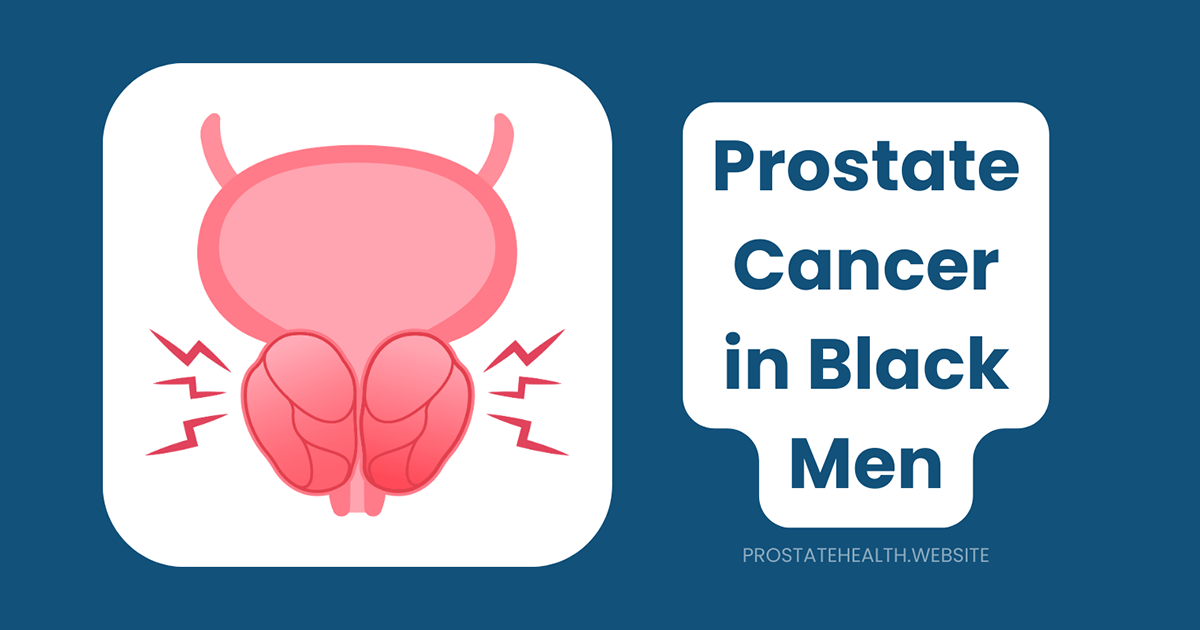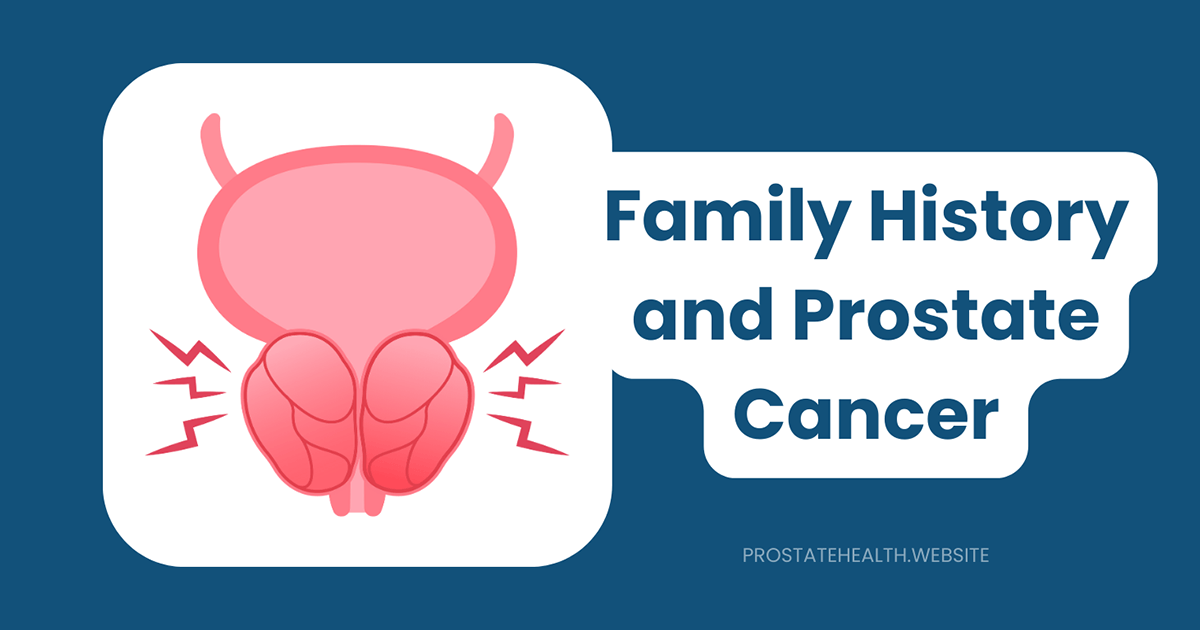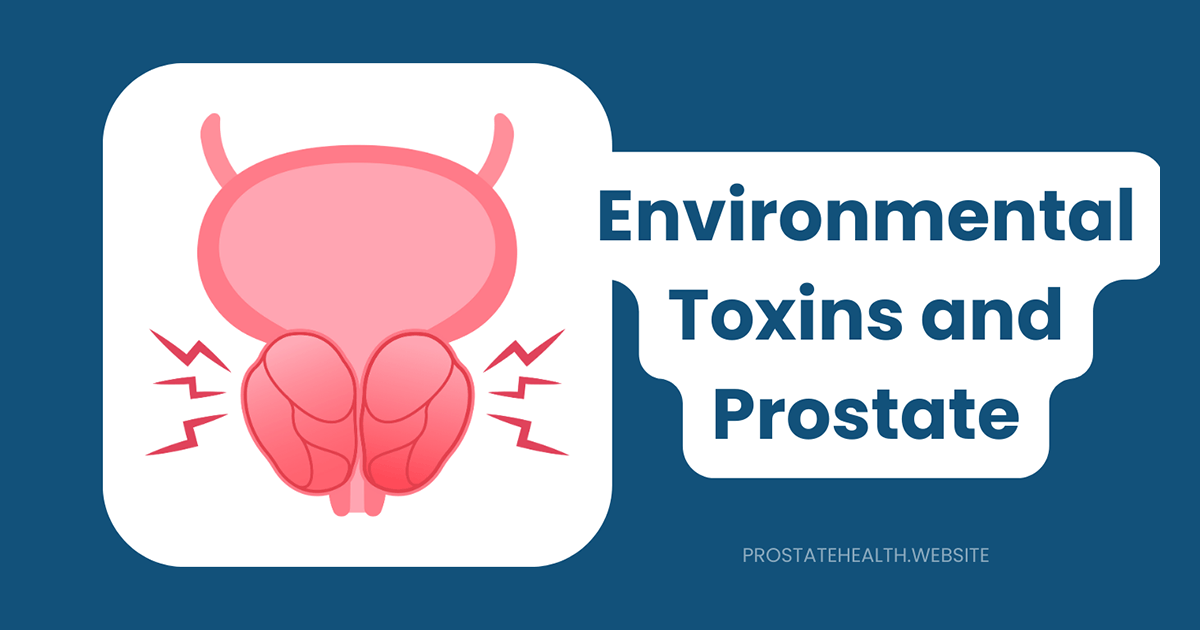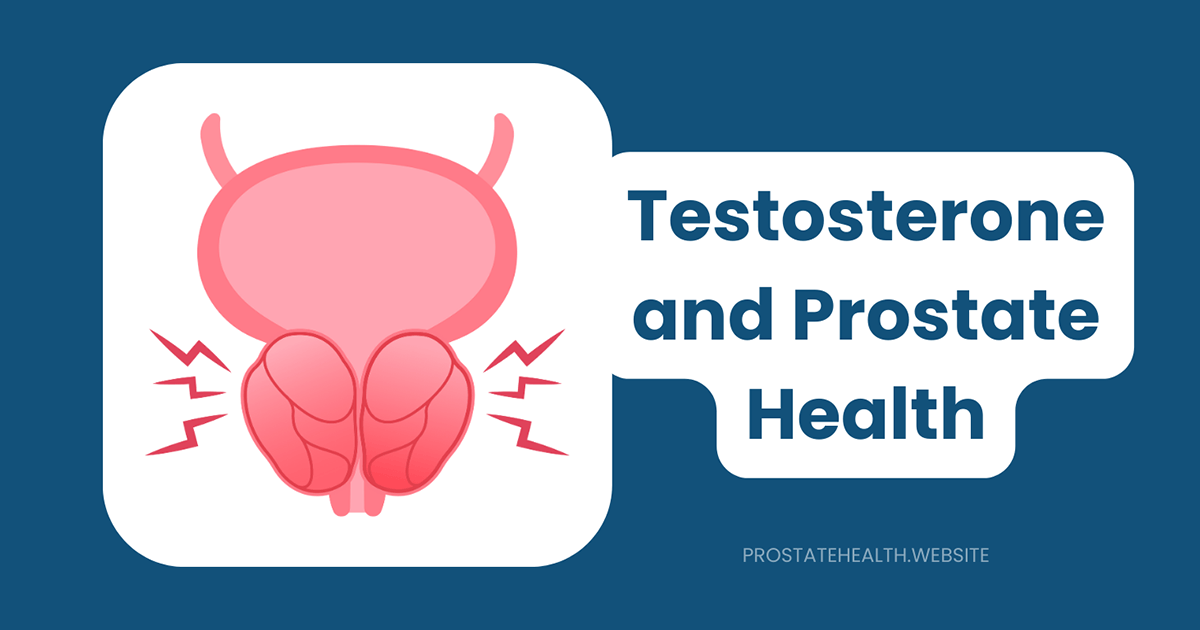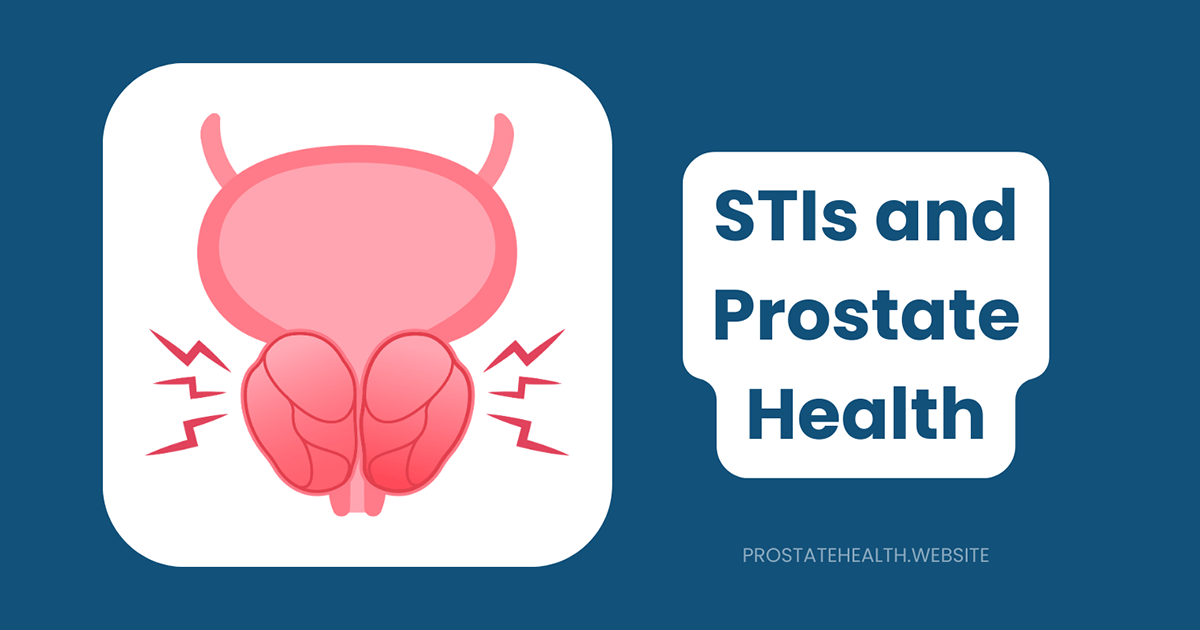Age and Prostate Cancer Risk: What the Numbers Tell Us
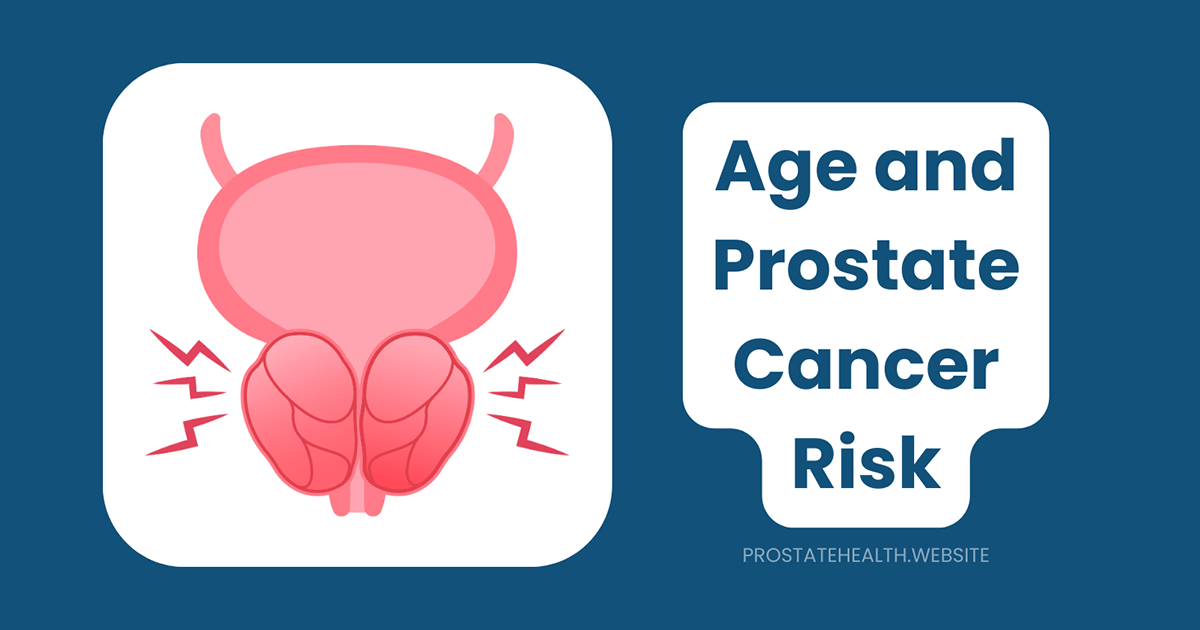
When it comes to prostate cancer, age is more than just a number—it’s one of the most significant risk factors men face. While we often hear that prostate cancer is common, understanding exactly how age influences risk can help men make informed decisions about screening, prevention, and overall health management.
Throughout my years of advocating for men’s health, I’ve found that concrete statistics often provide the clarity needed to move from vague awareness to meaningful action. Let’s explore what the numbers tell us about the relationship between age and prostate cancer risk, and what these statistics mean for you or the men in your life.
The Age-Risk Relationship: By the Numbers
The connection between age and prostate cancer risk is one of the clearest relationships in cancer epidemiology. Let’s look at what the latest statistics reveal:
Lifetime Risk
According to the National Cancer Institute’s Surveillance, Epidemiology, and End Results (SEER) Program, approximately 12.9% of men will be diagnosed with prostate cancer at some point during their lifetime. That’s about 1 in 8 men—a statistic that surprises many.
However, this lifetime risk isn’t evenly distributed across all ages. The risk increases dramatically as men get older.
Age-Specific Incidence
The 2025 statistics from the American Cancer Society and SEER database show how prostate cancer incidence varies by age group:
- Under 40 years: Prostate cancer is rare, with less than 1 case per 100,000 men
- 40-44 years: About 9 cases per 100,000 men
- 45-49 years: About 45 cases per 100,000 men
- 50-54 years: About 142 cases per 100,000 men
- 55-59 years: About 264 cases per 100,000 men
- 60-64 years: About 456 cases per 100,000 men
- 65-69 years: About 644 cases per 100,000 men
- 70-74 years: About 763 cases per 100,000 men
- 75-79 years: About 751 cases per 100,000 men
- 80-84 years: About 627 cases per 100,000 men
- 85+ years: About 432 cases per 100,000 men
These numbers tell a compelling story: prostate cancer risk begins to rise noticeably after age 45, increases sharply after 50, and peaks in the 70-74 age group before slightly declining in the oldest age groups.
Age at Diagnosis
The median age at diagnosis for prostate cancer is 68 years, according to the latest SEER data. The percentage of new prostate cancer cases by age group breaks down as follows:
- Under 35 years: Less than 0.1%
- 35-44 years: 0.3%
- 45-54 years: 6.0%
- 55-64 years: 29.4%
- 65-74 years: 42.9%
- 75-84 years: 17.6%
- 85+ years: 3.8%
This distribution shows that more than 60% of all prostate cancer cases are diagnosed in men aged 65 and older, with the highest percentage occurring in the 65-74 age group.
Understanding the Age-Risk Curve
Why does prostate cancer risk increase so dramatically with age? Several biological factors contribute to this pattern:
Cellular Changes Over Time
As men age, cells in the prostate accumulate genetic mutations. These mutations can occur during normal cell division or due to exposure to various environmental factors. Over decades, these mutations may eventually lead to cancerous changes in prostate cells.
Hormonal Influences
Testosterone and its derivative, dihydrotestosterone (DHT), play roles in prostate cancer development. While these hormones are necessary for normal prostate function, they can also stimulate the growth of prostate cancer cells. The cumulative exposure to these hormones over a lifetime may contribute to increased cancer risk with age.
Declining Immune Function
The immune system typically identifies and destroys abnormal cells before they can develop into cancer. However, immune function tends to decline with age, potentially allowing cancer cells to escape detection and elimination.
Chronic Inflammation
Chronic inflammation in the prostate becomes more common as men age and may contribute to the development of prostate cancer by creating an environment conducive to DNA damage and cellular changes.
Age and Prostate Cancer Mortality
While incidence (new cases) tells one part of the story, mortality (deaths) provides another crucial perspective. According to the American Cancer Society, approximately 35,770 men are expected to die from prostate cancer in 2025.
The age distribution of prostate cancer deaths is even more heavily weighted toward older age groups than incidence:
- Under 35 years: Virtually 0%
- 35-44 years: 0.1%
- 45-54 years: 1.1%
- 55-64 years: 8.6%
- 65-74 years: 24.8%
- 75-84 years: 34.1%
- 85+ years: 31.3%
These statistics reveal that more than 65% of prostate cancer deaths occur in men aged 75 and older. This reflects both the higher incidence in older age groups and the fact that prostate cancer often progresses slowly, with death occurring many years after diagnosis.
The lifetime risk of dying from prostate cancer is about 2.3% (1 in 44 men), according to the American Cancer Society. This is significantly lower than the lifetime risk of diagnosis (12.9% or 1 in 8), highlighting that many men diagnosed with prostate cancer will ultimately die from other causes.
Age and Prostate Cancer Aggressiveness
Not all prostate cancers are created equal. The relationship between age and cancer aggressiveness adds another important dimension to understanding risk:
Risk Group Distribution by Age
Research published in the Journal of Clinical Oncology shows that the proportion of high-risk prostate cancers increases with age:
- 50-54 years: About 15% of cases are high-risk
- 55-59 years: About 18% of cases are high-risk
- 60-64 years: About 22% of cases are high-risk
- 65-69 years: About 26% of cases are high-risk
- 70-74 years: About 30% of cases are high-risk
- 75-79 years: About 40% of cases are high-risk
- 80+ years: About 50% of cases are high-risk
This pattern means that not only does the overall risk of prostate cancer increase with age, but the likelihood of developing a more aggressive form also rises. At age 75-79, the absolute incidence of high-risk prostate cancer is approximately 6 times greater than at age 55-59.
Gleason Score and Age
The Gleason score, which measures how aggressive prostate cancer appears under a microscope, also tends to be higher in older men. A study in the European Urology Journal found that the average Gleason score increases steadily with age, from about 6.5 in men under 55 to over 7.5 in men over 75.
This relationship between age and aggressiveness has important implications for screening and treatment decisions, which we’ll explore later.
Age and Survival Rates
While older men face higher risks of both developing prostate cancer and having more aggressive disease, age-specific survival rates provide a more nuanced picture:
5-Year Relative Survival Rates by Age
According to SEER data, the 5-year relative survival rates for prostate cancer by age group are:
- Under 50 years: 99.3%
- 50-64 years: 99.8%
- 65-74 years: 98.6%
- 75+ years: 91.5%
These numbers show that while survival rates are excellent across all age groups, they do decline somewhat in the oldest men. This reflects both the higher proportion of aggressive cancers in older men and the impact of other health conditions that may complicate treatment.
Survival by Stage and Age
When we look at survival rates by both stage and age, we see that:
- For localized prostate cancer (confined to the prostate), 5-year relative survival is nearly 100% for all age groups under 75, and about 97% for men 75 and older.
- For regional prostate cancer (spread to nearby structures or lymph nodes), 5-year relative survival ranges from 99% in younger men to about 95% in men 75 and older.
- For distant (metastatic) prostate cancer, 5-year relative survival ranges from about 35% in younger men to about 20% in men 75 and older.
These statistics highlight that while age does impact survival, the stage at diagnosis remains the most critical factor in determining outcomes.
Age and Other Risk Factors: The Compounding Effect
While age is a primary risk factor for prostate cancer, it doesn’t act in isolation. Other risk factors can compound age-related risk:
Family History and Age
The impact of family history on prostate cancer risk varies by age:
- Men with a family history of prostate cancer tend to develop the disease 6-7 years earlier than those without such history.
- Having a first-degree relative (father or brother) with prostate cancer doubles a man’s risk at any age.
- The risk is even higher if multiple relatives were affected or if relatives were diagnosed at a young age.
According to research published in the Journal of Clinical Oncology, a 55-year-old man with a family history of prostate cancer has a risk profile similar to that of a 60-65-year-old man without such history.
Race/Ethnicity and Age
The relationship between age and prostate cancer risk varies significantly across racial and ethnic groups:
- African American men face a prostate cancer risk at age 50-54 that’s similar to the risk White men face at age 60-64.
- African American men are about 1.7 times more likely to be diagnosed with prostate cancer than non-Hispanic White men and 2.1 times more likely to die from the disease.
- Asian American and Hispanic/Latino men generally have lower age-specific incidence rates than White or African American men.
These disparities reflect complex interactions between genetic factors, access to healthcare, socioeconomic status, and other variables.
Genetic Factors and Age
Certain inherited genetic mutations can significantly alter age-related risk:
- Men with BRCA2 mutations have a 2-6 times higher risk of prostate cancer and tend to develop the disease at a younger age.
- Other genetic variants, including mutations in genes like HOXB13, ATM, CHEK2, and those associated with Lynch syndrome, can also increase risk and lower the typical age of onset.
For men with these genetic predispositions, prostate cancer screening is often recommended to begin earlier than the general population.
Age-Based Screening Recommendations: Navigating the Controversy
Given the strong relationship between age and prostate cancer risk, age has become the primary factor in screening recommendations. However, these recommendations have evolved over time and continue to be debated:
Current Guidelines
Major medical organizations offer somewhat different recommendations:
- U.S. Preventive Services Task Force (USPSTF): Recommends individualized decision-making about screening for men aged 55-69. Does not recommend routine screening for men under 55 or over 70.
- American Cancer Society (ACS): Suggests discussions about screening should begin at age 50 for men at average risk, age 45 for men at high risk (African Americans and those with a first-degree relative diagnosed with prostate cancer before age 65), and age 40 for men at even higher risk (multiple family members affected at an early age).
- American Urological Association (AUA): Recommends shared decision-making about screening for men aged 55-69. For men under 55 or over 70, recommends individualized decisions based on personal risk factors and preferences.
The Age Controversy
The upper age limit for prostate cancer screening remains particularly controversial. While incidence and aggressiveness increase with age, several factors complicate screening decisions for older men:
- Life expectancy: Prostate cancer often progresses slowly. Men with less than 10-15 years of life expectancy may not benefit from early detection.
- Competing risks: Older men face higher risks from other health conditions that may pose greater threats to their health and longevity than prostate cancer.
- Treatment complications: Older men may experience more complications from prostate cancer treatment, potentially outweighing the benefits of early detection.
- Overdiagnosis concern: Screening may detect cancers that would never have caused symptoms or death, leading to unnecessary treatment and side effects.
Despite these concerns, some experts argue that healthy older men with longer life expectancy should still consider screening, especially given the higher prevalence of aggressive disease in this age group.
Making Sense of Age-Related Risk: Practical Implications
What do these statistics mean for individual men? How should they inform decisions about screening, prevention, and overall health?
For Younger Men (Under 50)
While prostate cancer is rare in this age group, men with strong risk factors should be aware of their elevated risk:
- African American men should consider beginning discussions about screening at age 45.
- Men with a family history of prostate cancer, particularly if diagnosed before age 65, should consider beginning discussions about screening at age 45 or even 40 if multiple relatives were affected.
- Men with known genetic mutations that increase prostate cancer risk should discuss appropriate screening timelines with their healthcare providers.
- All men in this age group can benefit from adopting healthy lifestyle habits that may reduce prostate cancer risk, including maintaining a healthy weight, staying physically active, and consuming a diet rich in fruits and vegetables.
For Middle-Aged Men (50-69)
This is the age range where the risk-benefit ratio for prostate cancer screening is most favorable:
- Men at average risk should have informed discussions with their healthcare providers about the potential benefits and harms of screening, typically beginning at age 50.
- African American men and those with family history should be particularly vigilant about screening in this age range.
- Men who choose screening should understand that an abnormal result may lead to additional testing, including prostate biopsy.
- All men in this age group should be familiar with potential prostate cancer symptoms, including urinary changes, even though these are more commonly caused by benign conditions.
For Older Men (70 and Above)
Decision-making becomes more individualized in this age group:
- Men with at least 10-15 years of life expectancy may still benefit from prostate cancer screening, particularly if they’re in good overall health.
- Men with limited life expectancy (less than 10 years) due to age or health conditions may want to discontinue screening, as the potential harms may outweigh the benefits.
- Men previously diagnosed with prostate cancer should continue appropriate follow-up care regardless of age.
- All men should discuss their individual risk factors and preferences with their healthcare providers to make personalized decisions.
Beyond Age: Reducing Risk at Any Stage of Life
While age is a risk factor we can’t control, other aspects of prostate cancer risk are modifiable at any age:
Lifestyle Factors
Evidence suggests that certain lifestyle choices may help reduce prostate cancer risk or improve outcomes:
- Physical activity: Regular exercise is associated with a reduced risk of aggressive prostate cancer. Men who engage in vigorous activity for three or more hours per week may have a 61% lower risk of dying from prostate cancer.
- Healthy diet: A diet rich in fruits, vegetables, whole grains, and healthy fats (like those found in fish, nuts, and olive oil) may help reduce prostate cancer risk. Limiting red and processed meats may also be beneficial.
- Weight management: Obesity is associated with an increased risk of aggressive prostate cancer and poorer outcomes after diagnosis.
- Smoking cessation: Smoking is linked to more aggressive prostate cancer and higher risk of recurrence after treatment.
Preventive Medications
Some medications may reduce prostate cancer risk, though they’re not typically recommended solely for this purpose:
- 5-alpha reductase inhibitors: Medications like finasteride and dutasteride, often used to treat benign prostatic hyperplasia (BPH), may reduce the overall risk of prostate cancer. However, there are concerns about a possible small increase in high-grade cancers.
- Aspirin and NSAIDs: Some studies suggest regular use of aspirin or other non-steroidal anti-inflammatory drugs may be associated with a reduced risk of prostate cancer, though results are inconsistent.
Men interested in these approaches should discuss the potential benefits and risks with their healthcare providers.
Conclusion: Empowerment Through Understanding
The relationship between age and prostate cancer risk is clear and significant. As men age, their risk of developing prostate cancer—particularly aggressive forms—increases substantially. However, understanding these statistics isn’t meant to cause alarm but rather to empower informed decision-making.
I’ve found that men who understand their age-related risk are better equipped to have productive conversations with their healthcare providers about screening, prevention, and overall prostate health. Breaking the silence around prostate cancer and replacing fear with knowledge is one of the most important things we can do for ourselves and the men in our lives.
Remember, while age is a risk factor we can’t control, many aspects of prostate health are within our influence. Regular check-ups, informed screening decisions, healthy lifestyle choices, and awareness of symptoms can all contribute to better outcomes, regardless of age.
What steps will you take to protect your prostate health at your current age?

